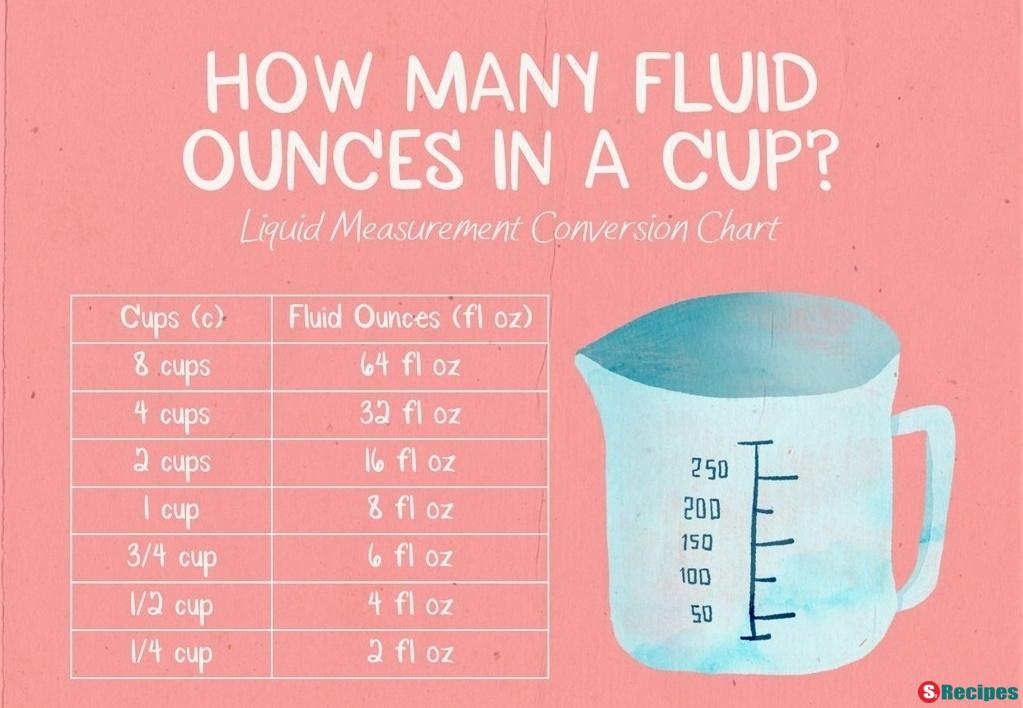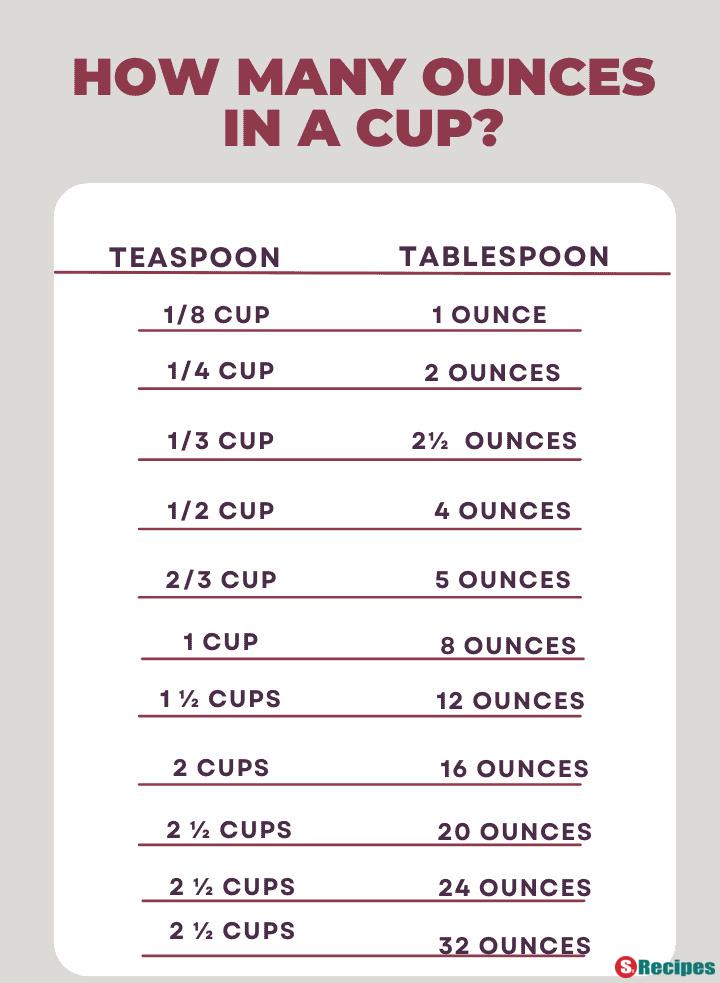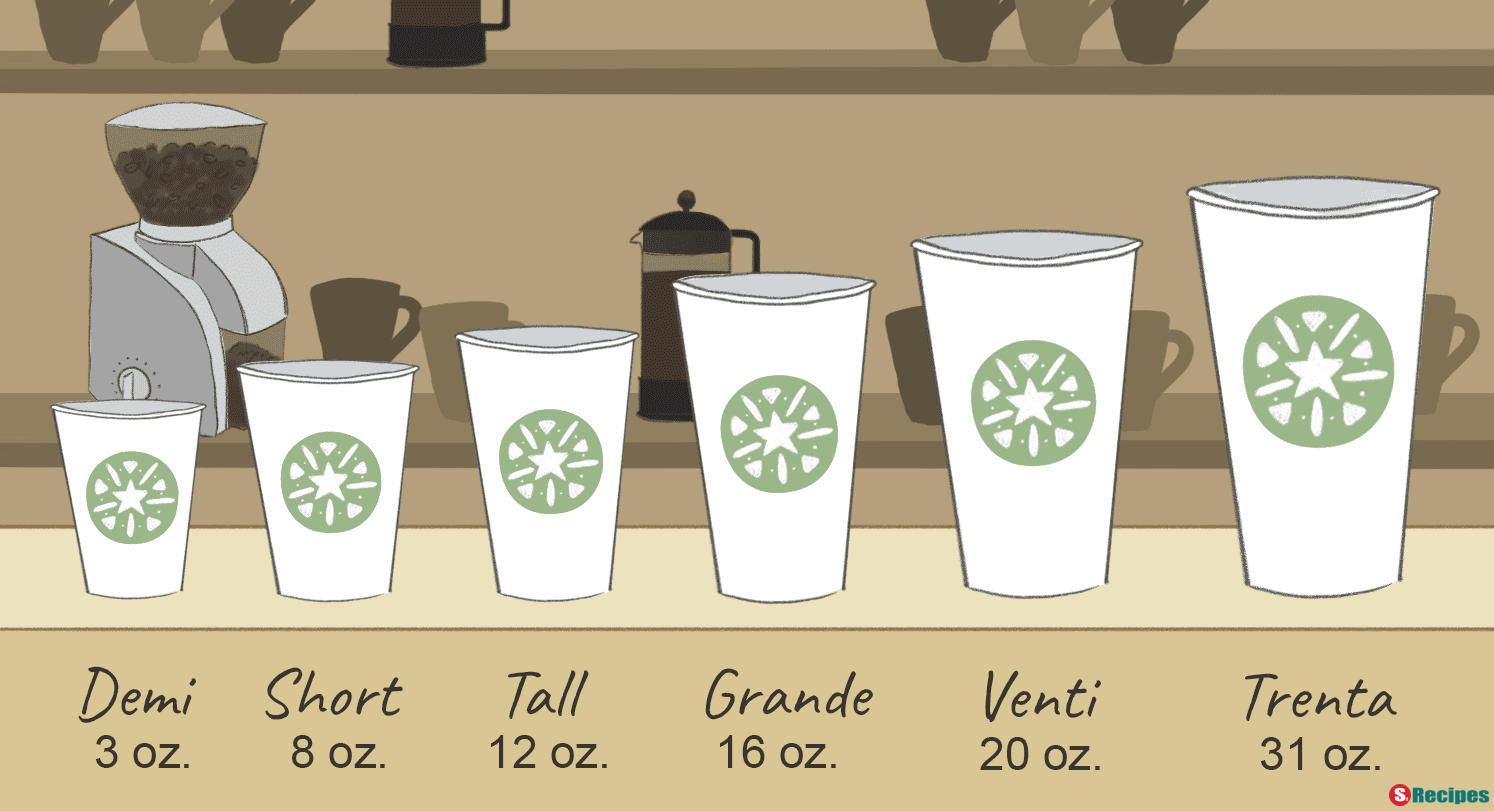If you’ve ever found yourself in the middle of a recipe, only to realize that it calls for ounces instead of cups, you’re not alone. The relationship between ounces and cups can be confusing, especially for those who are new to cooking and baking. But fear not, this comprehensive guide will break down everything you need to know about how many ounces are in a cup.

Before we dive into conversions and formulas, it’s important to understand the relationship between ounces and cups. Both units of measurement are commonly used in cooking and baking, but they measure different things.
An ounce is a unit of weight or mass, while a cup is a unit of volume. This means that an ounce measures the amount of matter in an object, while a cup measures the space that an object takes up. In simpler terms, ounces measure weight and cups measure volume.
In the United States, the standard cup size is 8 fluid ounces, which is equivalent to 1/2 pint or 1/16 gallon. However, in other countries, such as Canada and Australia, the standard cup size is slightly larger at 8.45 fluid ounces. This slight difference can cause confusion when converting between ounces and cups, so it’s important to pay attention to the country of origin when using recipes.
Now that we have a basic understanding of ounces and cups, let’s get into the nitty-gritty of conversions. There are two main methods for converting ounces to cups: using simple steps or using formulas.
Step 1: Determine the conversion factor. As mentioned earlier, the standard cup size in the US is 8 fluid ounces. This means that there are 8 ounces in 1 cup.
Step 2: Multiply the number of cups by the conversion factor. For example, if you have 4 cups, you would multiply 4 by 8 to get 32 ounces.
Step 3: Round the answer to the nearest whole number. In this case, the answer would be 32 ounces.
There are two main formulas for converting ounces to cups, depending on the type of ounce being used.
For fluid ounces: 1 cup = 8 fluid ounces Therefore, to convert from fluid ounces to cups, divide the number of fluid ounces by 8.
For dry ounces: 1 cup = 8 dry ounces Therefore, to convert from dry ounces to cups, divide the number of dry ounces by 8.
Let’s look at an example using both formulas. If a recipe calls for 24 fluid ounces of milk, we would divide 24 by 8 to get 3 cups. On the other hand, if a recipe calls for 16 dry ounces of flour, we would also divide 16 by 8 to get 2 cups.

When it comes to measuring ingredients in cooking and baking, accuracy is key. This is especially true when dealing with small measurements like ounces. To ensure that your measurements are as accurate as possible, it’s important to use the right tools and units.
In the US, the standard unit for measuring ounces is the fluid ounce. As mentioned earlier, 1 cup is equivalent to 8 fluid ounces. When measuring liquids, it’s important to use a liquid measuring cup, which has a spout and markings for different units of measurement. This allows for more precise measurements, as opposed to using a regular measuring cup meant for dry ingredients.
When measuring dry ingredients, such as flour or sugar, it’s important to use a dry measuring cup. These cups have a flat top and allow for the ingredients to be leveled off, ensuring an accurate measurement.
In countries that use the metric system, such as Canada and Australia, the standard unit for measuring ounces is the milliliter (mL). 1 cup is equivalent to 250 mL. When using metric units, it’s important to use a kitchen scale to measure out the exact amount of ounces needed. This is especially helpful when dealing with small measurements, as scales can measure in fractions of an ounce.
Even with the right tools and units, there are still common mistakes that can occur when measuring ounces in cups. Here are a few things to keep in mind to ensure accurate measurements:

Now that we have a better understanding of how many ounces are in a cup and how to convert between the two, let’s explore some practical applications of this knowledge in cooking and baking.
One of the most common uses for ounce-to-cup conversions is adjusting recipes. If you want to make a larger or smaller batch of a recipe, knowing how to convert between ounces and cups allows you to adjust the ingredient amounts accordingly. This is especially helpful when dealing with recipes that use both ounces and cups, as it allows for more precise measurements.
Another practical application of ounce-to-cup conversions is substituting ingredients. For example, if a recipe calls for 8 ounces of chocolate chips, but you only have chocolate bars, knowing that 1 cup is equivalent to 8 ounces allows you to easily substitute 1 cup of chopped chocolate bars for the chocolate chips.
Scaling recipes is another common use for ounce-to-cup conversions. If you want to make a larger or smaller batch of a recipe, but don’t want to change the ingredient amounts, knowing how many ounces are in a cup allows you to scale the recipe up or down without changing the proportions.

To make things even easier, here is a quick reference table for converting between ounces and cups:

For those who prefer a more hands-on approach, here is an interactive calculator that allows you to convert between ounces and cups with ease:
To wrap up our comprehensive guide, let’s address some frequently asked questions about ounces and cups.
As mentioned earlier, the standard cup size in the US is 8 fluid ounces. This means that 1 cup of water is equivalent to 8 ounces.
The weight of flour can vary depending on how it is measured. However, as a general rule, 1 cup of all-purpose flour is equivalent to 4.5 ounces.
While it is possible to use a regular measuring cup for liquids, it’s not recommended. Liquid measuring cups have a spout and markings for different units of measurement, allowing for more precise measurements.
Technically, yes, but it’s not the most accurate method. Kitchen scales are designed to measure weight, not volume, so it’s best to use a liquid measuring cup for liquids.

In conclusion, understanding the relationship between ounces and cups is essential for accurate measurements in cooking and baking. By following the simple steps and formulas outlined in this guide, you can easily convert between ounces and cups and avoid common mistakes. Whether you’re adjusting recipes, substituting ingredients, or scaling up or down, knowing how many ounces are in a cup will make your time in the kitchen much easier. So next time you come across a recipe that calls for ounces instead of cups, you’ll be well-equipped to handle it like a pro.
Happy cooking!